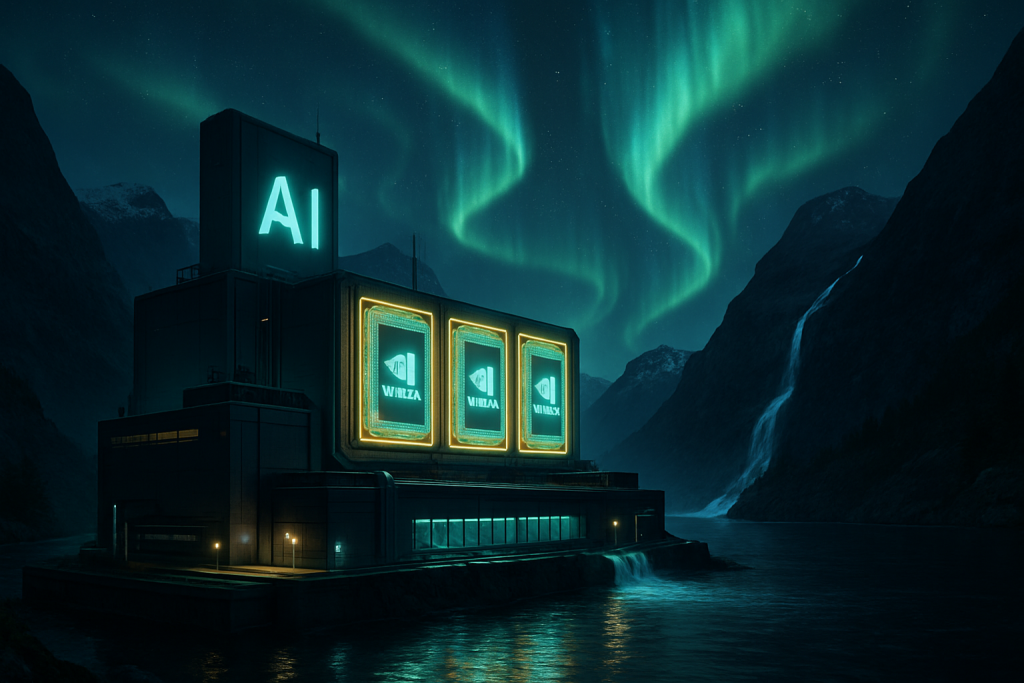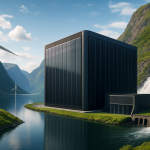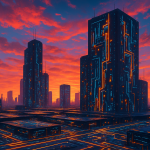The fjords are about to get a whole lot more… intelligent. Aker ASA, the Norwegian industrial investment company, just dropped a bombshell: a cool $1 billion is being poured into northern Norway to build a state-of-the-art artificial intelligence facility. And they aren’t going it alone. Nscale Global Holdings is in on the action, and perhaps more importantly, OpenAI is the brains behind the operation. It’s called “Stargate Norway,” and it’s poised to become a major player in the global AI race.
But why Norway? Why now? Let’s unpack this digital Viking raid.
The project, slated to house a staggering 100,000 Nvidia processors by the end of 2026, isn’t just about raw computational power. It’s about building a sustainable, sovereign, and scalable AI future. Think of it as OpenAI planting a flag, not on the moon, but in a strategically chosen corner of Europe. And that corner, bathed in the ethereal glow of the aurora borealis, is brimming with something just as valuable as lunar rocks: renewable energy.
The Stargate Program: OpenAI’s Global Ambitions
Stargate Norway is the latest piece in OpenAI’s grand Stargate program, a globe-trotting initiative aimed at establishing AI gigafactories around the world. Before Norway, the UAE was in the spotlight. These aren’t your run-of-the-mill data centers. We’re talking about massive, purpose-built facilities designed to feed the insatiable hunger of advanced AI models. Training these models, as anyone who’s tried to teach a neural network to identify cats knows, requires serious horsepower. And that horsepower, in turn, requires serious infrastructure.
OpenAI, fresh off the release of GPT-10 (which, by the way, can now write entire screenplays in the style of Quentin Tarantino), needs these facilities more than ever. The models are getting bigger, smarter, and more resource-intensive. They’ve moved beyond simply answering questions; they’re generating art, composing music, and even, dare we say, thinking…or at least, simulating it convincingly.
Hydropowered AI: Green Computing in the Arctic Circle
The location of Stargate Norway is no accident. Northern Norway boasts an abundance of hydropower, making it an ideal location for a facility that’s determined to be as green as it is groundbreaking. While other AI powerhouses are grappling with the environmental impact of their energy-guzzling operations, Stargate Norway is aiming for a carbon-neutral existence, powered by the rushing rivers and glacial meltwater of the region. It’s like something out of a sci-fi novel: harnessing the forces of nature to fuel the artificial minds of the future.
And speaking of futuristic tech, the facility will be packing some serious heat under the hood. We’re talking about Nvidia’s GB300 Superchips, connected by the blisteringly fast NVLink network. These aren’t your average gaming GPUs. These are the processors that power the most demanding AI computations, the silicon brains that are pushing the boundaries of what’s possible. Think of it as the AI equivalent of putting a warp drive in a DeLorean. Suddenly, time travel seems a lot more plausible.
Ownership, Expansion, and the Future of AI in Europe
Aker ASA and Nscale Global Holdings will be co-owners of Stargate Norway, a partnership that reflects the growing importance of collaboration in the AI space. The initial power capacity is set at 230 megawatts, with plans to potentially expand to 520 megawatts. But that’s just the beginning. The long-term vision involves a potential tenfold increase in capacity, signaling a commitment to scaling AI infrastructure on a massive scale.
This project is more than just a business venture; it’s a strategic move. By establishing a major AI facility in Europe, OpenAI and its partners are addressing geopolitical concerns about data sovereignty and technological independence. It’s a clear signal that Europe is determined to be a major player in the AI revolution, not just a consumer of AI technologies developed elsewhere.
The Market Reacts: Aker ASA’s Stock Surge
The market certainly seems to agree. Following the announcement, Aker ASA’s stock jumped by 4.1%, a clear indication of investor confidence in the project’s potential. The financial world is waking up to the fact that AI infrastructure is the new gold rush, and companies that are investing in it are being rewarded accordingly. It’s like the dot-com boom all over again, but this time, instead of websites, we’re building AI brains.
Ethical Considerations and the Future of AI
Of course, the rapid growth of AI raises some serious ethical questions. As AI becomes more powerful, it’s crucial to ensure that it’s developed and used responsibly. Projects like Stargate Norway, with their emphasis on sustainability and European sovereignty, represent a step in the right direction. But we need to have a broader conversation about the ethical implications of AI, about bias, fairness, and the potential for misuse.
Will AI replace human jobs? Will it exacerbate existing inequalities? Will it lead to a Skynet-style dystopia? These are questions that we need to grapple with as we continue to push the boundaries of AI technology. Stargate Norway may be a symbol of progress, but it’s also a reminder that we need to proceed with caution, ensuring that AI benefits all of humanity, not just a select few.
In the meantime, keep an eye on those Norwegian fjords. They might just be the birthplace of the next big thing in AI.
Discover more from Just Buzz
Subscribe to get the latest posts sent to your email.


